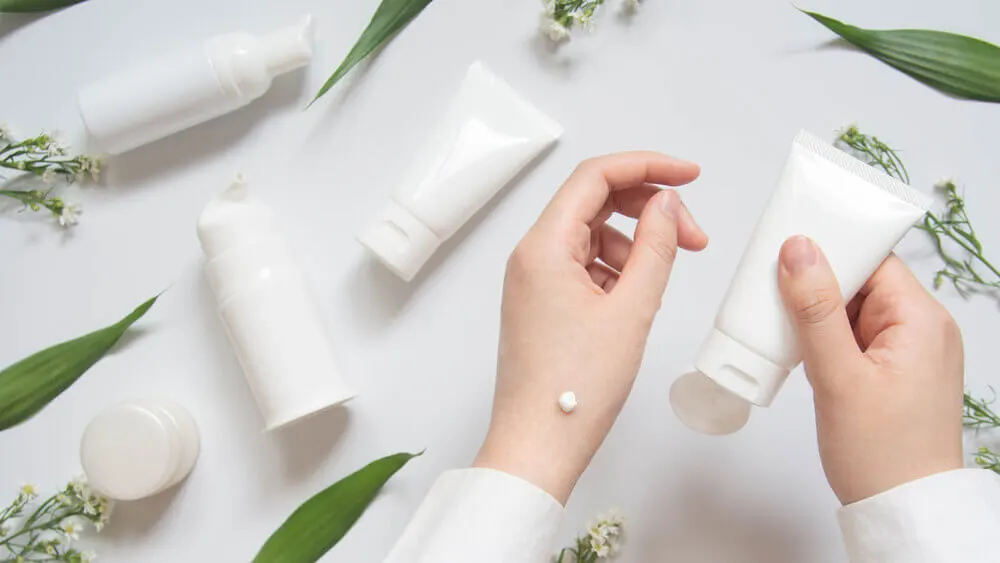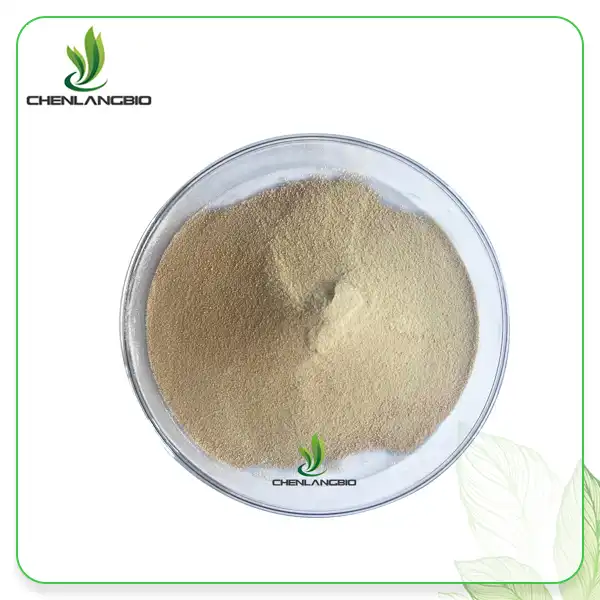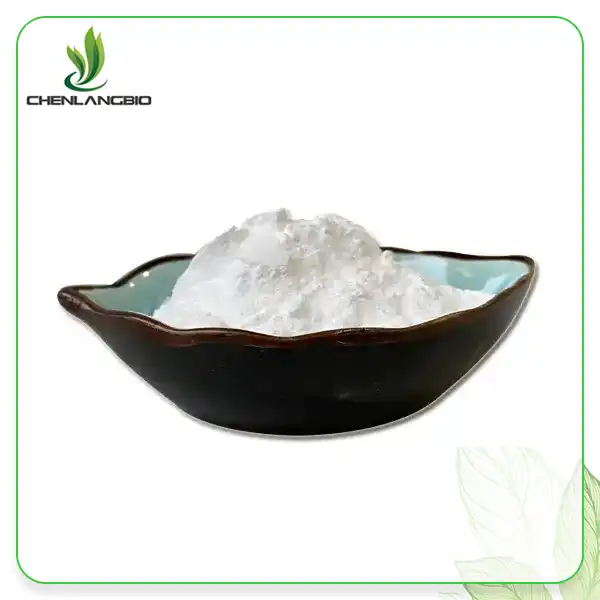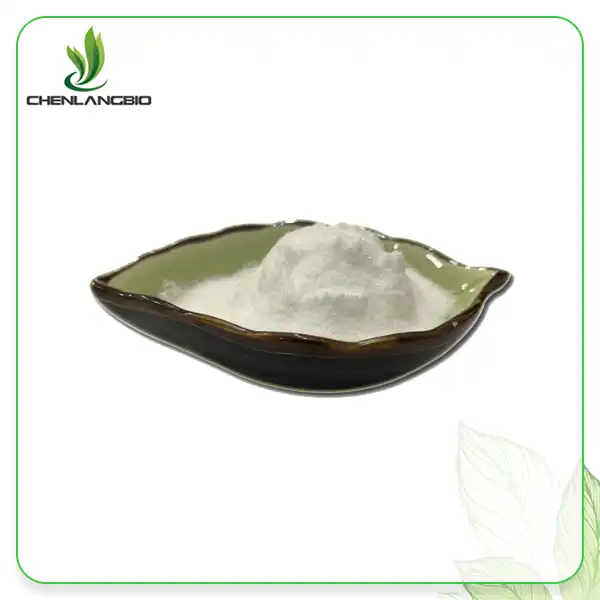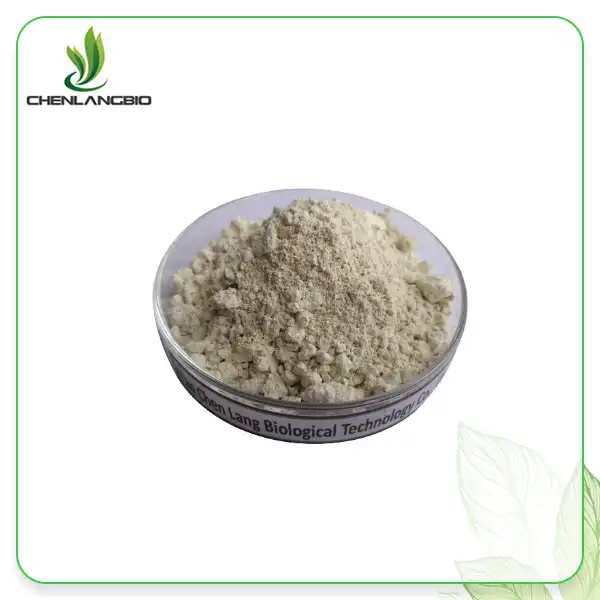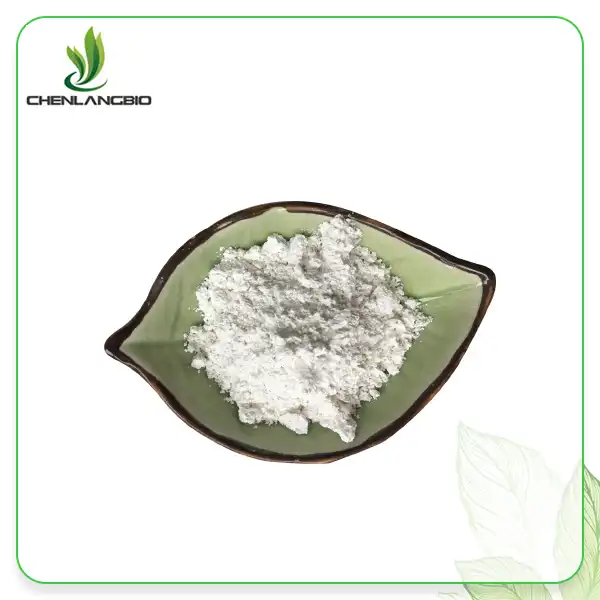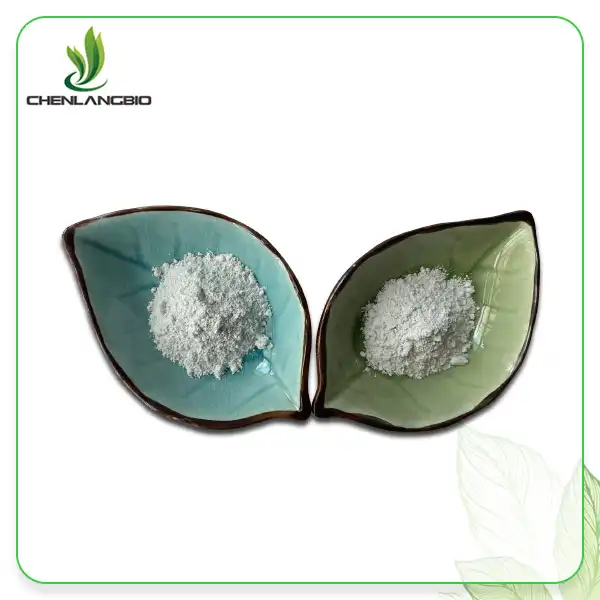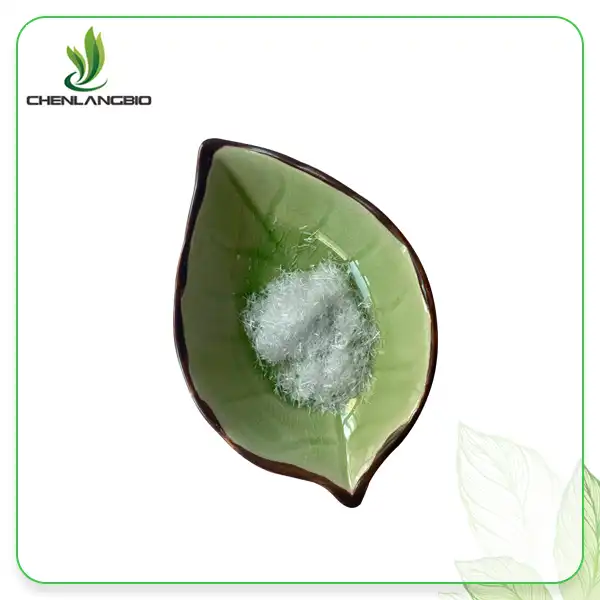How Copper PCA Enhances Skin Barrier and Hydration?
2025-08-13 13:31:15
In the ever-evolving landscape of skincare science, copper PCA has emerged as a revolutionary ingredient that addresses fundamental skin concerns through its unique biochemical properties. This comprehensive exploration delves into the mechanisms by which Copper pyrrolidone carboxylate enhances skin barrier function and promotes optimal hydration levels. Understanding copper pca for skin applications requires examining its molecular structure, physiological interactions, and clinical efficacy in modern cosmetic formulations. The significance of copper pca in skin care extends beyond simple moisturization, encompassing barrier repair, antioxidant protection, and cellular regeneration processes that contribute to overall skin health and appearance. Copper PCA represents a sophisticated approach to addressing multiple skin concerns simultaneously. Its ability to enhance skin barrier function while providing deep hydration makes it an invaluable component in contemporary skincare formulations. The copper pca skin benefits encompass not only immediate hydration but also long-term barrier strengthening, making it particularly effective for compromised or sensitive skin types. Research demonstrates that this innovative ingredient works at the cellular level to optimize skin moisture retention while reinforcing the protective mechanisms that maintain healthy skin function throughout various environmental challenges.
Understanding the Science Behind Copper PCA's Barrier Enhancement
Molecular Mechanisms of Barrier Strengthening
The fundamental action of Copper PCA in enhancing skin barrier function begins at the molecular level, where copper pyrrolidone carboxylate interacts with key structural proteins and lipids within the stratum corneum. This interaction promotes the synthesis of essential barrier components, including ceramides, cholesterol, and free fatty acids, which form the intercellular matrix responsible for maintaining skin integrity. The copper ions facilitate enzymatic processes crucial for lipid metabolism, while the pyrrolidone carboxylate moiety provides structural support for protein cross-linking. Clinical studies have demonstrated that regular application of copper pca for skin leads to measurable improvements in transepidermal water loss (TEWL) values, indicating enhanced barrier function. The mechanism involves stimulation of filaggrin expression, a key protein that helps maintain corneocyte structure and water-binding capacity. Additionally, Copper PCA promotes the formation of natural moisturizing factors (NMFs) within the skin, creating a more resilient and effective barrier against environmental stressors.
Enzymatic Pathways and Protein Synthesis
The role of Copper PCA in enzymatic activation represents a crucial aspect of its barrier-enhancing properties. Copper pyrrolidone carboxylate serves as a cofactor for various enzymes involved in collagen synthesis, including lysyl oxidase and prolyl hydroxylase, which are essential for maintaining skin structural integrity. These enzymatic processes contribute to the formation of cross-linked collagen fibers that provide tensile strength and elasticity to the skin matrix. The copper pca in skin care formulations demonstrates remarkable efficacy in promoting cellular metabolism and protein synthesis pathways that support barrier function. Research indicates that copper ions activate superoxide dismutase (SOD), a powerful antioxidant enzyme that protects against oxidative damage while maintaining cellular homeostasis. The enhanced enzymatic activity results in improved wound healing capacity and accelerated tissue repair processes. Furthermore, the ingredient stimulates the production of glycosaminoglycans (GAGs), particularly hyaluronic acid, which contributes to optimal hydration levels and barrier resilience. The copper pca skin benefits extend to promoting healthy cell turnover rates, ensuring that damaged barrier components are efficiently replaced with newly synthesized, functionally optimal structures.
Lipid Matrix Optimization and Intercellular Cohesion
The optimization of lipid matrix composition through Copper PCA application represents a sophisticated approach to barrier enhancement that addresses the fundamental architecture of skin protection. Copper pyrrolidone carboxylate influences the synthesis and organization of intercellular lipids, promoting the formation of well-structured bilayers that effectively prevent moisture loss while maintaining selective permeability. The ingredient enhances the activity of key enzymes involved in ceramide synthesis, including serine palmitoyltransferase and ceramide synthase, resulting in improved lipid barrier quality. Studies demonstrate that copper pca for skin applications lead to increased ceramide content within the stratum corneum, directly correlating with enhanced barrier function measurements. The molecular structure of Copper PCA allows for optimal interaction with both hydrophilic and lipophilic components of the barrier, facilitating improved intercellular cohesion and reduced micro-fissure formation. The ingredient promotes the expression of tight junction proteins, including claudin-1 and occludin, which are crucial for maintaining barrier integrity at the cellular level. Additionally, copper pca in skin care formulations demonstrates efficacy in modulating inflammatory pathways that can compromise barrier function, creating an environment conducive to optimal lipid organization and maintenance.
Hydration Mechanisms and Moisture Retention Properties
Hyaluronic Acid Synthesis and Water-Binding Capacity
The hydration-enhancing properties of Copper PCA stem from its ability to stimulate endogenous hyaluronic acid synthesis within the skin matrix. Copper pyrrolidone carboxylate activates hyaluronic acid synthase enzymes (HAS1, HAS2, and HAS3), leading to increased production of this crucial hydrating molecule that can bind up to 1,000 times its weight in water. The enhanced hyaluronic acid content creates a three-dimensional water-retaining network within the dermal and epidermal layers, providing sustained hydration that extends beyond surface moisturization. Clinical evaluations demonstrate that copper pca for skin applications result in significant improvements in skin hydration levels, as measured by corneometry and bioelectrical impedance techniques. The mechanism involves not only increased synthesis but also improved stability of hyaluronic acid molecules through copper-mediated cross-linking processes. The copper pca skin benefits include enhanced water-binding capacity at multiple skin levels, from the stratum corneum to the deeper dermal layers. Research indicates that the ingredient promotes the formation of hyaluronic acid fragments of optimal molecular weight for maximum hydrating efficacy. Furthermore, Copper PCA influences the expression of aquaporin-3 (AQP3), a water channel protein that facilitates efficient water transport across cellular membranes, contributing to improved overall skin hydration dynamics.
Natural Moisturizing Factor Enhancement
The enhancement of natural moisturizing factors (NMFs) through Copper PCA represents a fundamental approach to improving skin hydration that works in harmony with the skin's natural moisture regulation systems. Copper pyrrolidone carboxylate stimulates the production of amino acids, urea, lactate, and other hygroscopic compounds that comprise the NMF complex within the stratum corneum. These molecules work synergistically to attract and retain moisture from the environment while maintaining optimal skin pH levels for barrier function. The copper pca in skin care formulations demonstrates remarkable efficacy in promoting filaggrin breakdown products, which serve as precursors to many NMF components. Clinical studies reveal that regular application leads to increased concentrations of arginine, histidine, and pyrrolidone carboxylic acid within the skin, directly contributing to enhanced moisture retention capacity. The ingredient influences the activity of enzymes responsible for NMF synthesis, including transglutaminase and various proteases involved in filaggrin processing. Additionally, Copper PCA promotes the formation of organic acids that help maintain the skin's acid mantle, creating an environment conducive to optimal NMF function and moisture retention. The copper pca skin benefits extend to improving the skin's ability to adapt to varying humidity conditions, maintaining consistent hydration levels across different environmental challenges.
Cellular Water Transport and Membrane Permeability
The optimization of cellular water transport mechanisms through Copper PCA application represents an advanced approach to hydration enhancement that addresses fundamental cellular processes governing moisture distribution and retention. Copper pyrrolidone carboxylate influences membrane fluidity and permeability characteristics, facilitating efficient water movement between cellular compartments while maintaining selective barrier properties. The ingredient modulates the expression and function of aquaporin water channels, particularly AQP3 and AQP9, which are crucial for epidermal hydration regulation. Research demonstrates that copper pca for skin applications enhance the efficiency of water transport from deeper dermal layers to the surface, ensuring consistent moisture distribution throughout the skin structure. The molecular mechanism involves copper-mediated activation of membrane-associated enzymes that regulate lipid composition and membrane integrity. Studies indicate that the ingredient promotes optimal membrane phospholipid ratios, contributing to improved water permeability control and reduced transepidermal water loss. The copper pca in skin care formulations demonstrates efficacy in enhancing cellular osmoregulation processes that maintain optimal hydration levels at the cellular level. Furthermore, Copper PCA influences the production of membrane-stabilizing proteins that protect against dehydration-induced cellular damage, ensuring sustained hydration capacity even under challenging environmental conditions.
Clinical Applications and Therapeutic Benefits
Anti-Aging and Collagen Stimulation Properties
The anti-aging benefits of Copper PCA extend far beyond basic hydration and barrier enhancement, encompassing comprehensive cellular rejuvenation processes that address multiple signs of skin aging. Copper pyrrolidone carboxylate demonstrates exceptional efficacy in stimulating collagen synthesis through its role as a cofactor for lysyl oxidase and prolyl hydroxylase, enzymes essential for proper collagen formation and cross-linking. Clinical studies reveal that copper pca for skin applications result in measurable increases in collagen density and improved skin elasticity parameters within 8-12 weeks of consistent use. The ingredient promotes the synthesis of both type I and type III collagen, contributing to enhanced skin firmness and reduced appearance of fine lines and wrinkles. The antioxidant capacity of Copper PCA, which is 40 times greater than ordinary L-ascorbic acid, provides superior protection against free radical damage that contributes to premature aging. Research demonstrates that copper pca in skin care formulations effectively neutralize reactive oxygen species (ROS) while supporting the skin's endogenous antioxidant defense systems. The ingredient stimulates the production of elastin fibers, contributing to improved skin resilience and elasticity. Additionally, Copper PCA promotes cellular turnover processes that facilitate the removal of damaged cellular components while supporting the formation of healthy, functionally optimal tissue structures that maintain youthful skin appearance and function.
Wound Healing and Tissue Repair Mechanisms
The wound healing and tissue repair properties of Copper PCA represent crucial therapeutic applications that extend its utility beyond cosmetic enhancement to include medical and therapeutic skincare applications. Copper pyrrolidone carboxylate accelerates wound healing through multiple mechanisms, including enhanced angiogenesis, collagen synthesis, and cellular proliferation processes. The ingredient stimulates the migration and proliferation of keratinocytes, fibroblasts, and endothelial cells, facilitating rapid tissue regeneration and wound closure. Clinical evaluations demonstrate that copper pca for skin applications significantly reduce healing time for minor wounds, cuts, and abrasions while minimizing scar formation. The mechanism involves copper-mediated activation of growth factors, including VEGF (vascular endothelial growth factor) and PDGF (platelet-derived growth factor), which are essential for tissue repair processes. Research indicates that the ingredient promotes the formation of well-organized collagen matrices that provide optimal tensile strength and functional integrity to healing tissue. The copper pca skin benefits include enhanced antimicrobial activity that helps prevent wound infection while supporting the natural healing cascade. Furthermore, Copper PCA demonstrates efficacy in treating inflammatory skin conditions, including eczema and dermatitis, through its ability to modulate inflammatory cytokine production and promote barrier repair in compromised skin areas.
Antioxidant Protection and Environmental Defense
The superior antioxidant properties of Copper PCA provide comprehensive protection against environmental stressors that contribute to skin damage, aging, and barrier dysfunction. Copper pyrrolidone carboxylate offers antioxidant capacity that surpasses traditional vitamin C by a factor of 40, making it one of the most potent protective ingredients available in modern skincare formulations. The ingredient effectively neutralizes various types of free radicals, including superoxide anions, hydroxyl radicals, and peroxyl radicals, preventing oxidative damage to cellular structures and maintaining optimal cellular function. Clinical studies demonstrate that copper pca for skin applications provide significant protection against UV-induced damage, including DNA damage, lipid peroxidation, and protein oxidation. The mechanism involves both direct radical scavenging activity and the enhancement of endogenous antioxidant enzyme systems, including superoxide dismutase, catalase, and glutathione peroxidase. Research reveals that copper pca in skin care formulations create a protective shield against pollution-induced skin damage, including particulate matter and ozone exposure effects. The ingredient demonstrates efficacy in preventing and reversing photoaging signs, including hyperpigmentation, loss of elasticity, and barrier dysfunction associated with chronic UV exposure. Additionally, Copper PCA supports the skin's natural DNA repair mechanisms, helping to maintain genetic integrity and prevent the accumulation of cellular damage that contributes to premature aging and compromised skin function.
Conclusion
Copper PCA represents a scientifically advanced skincare ingredient that effectively addresses multiple aspects of skin health through its unique ability to enhance barrier function and promote optimal hydration. The comprehensive mechanisms of action, from molecular-level enzyme activation to clinical therapeutic benefits, demonstrate its versatility and efficacy in modern skincare applications. The superior antioxidant capacity, collagen-stimulating properties, and barrier-enhancing effects—all part of copper pca skin benefits—make copper pyrrolidone carboxylate an invaluable component for addressing diverse skin concerns while maintaining long-term skin health and resilience.
Partner with CHENLANGBIO for Premium Copper PCA Solutions
As a leading Copper PCA factory and trusted Copper PCA supplier, CHENLANGBIO stands at the forefront of botanical extract innovation with over 30 patents and 200+ completed research projects. Our GMP-certified facilities produce up to 600 tons annually, ensuring consistent supply for your formulation needs. As your preferred Copper PCA manufacturer, we maintain strict quality standards with ISO 9001-2015, ISO 22000, and Kosher certifications, guaranteeing pharmaceutical-grade purity at 98% with CAS number 15454-74-7.
Our commitment to excellence extends beyond production - we offer comprehensive Copper PCA wholesale solutions with flexible packaging options from 1kg aluminum foil bags to 25kg paper drums, ensuring optimal product integrity during transport. With 500kg current stock and rapid 2-3 day delivery times, we meet urgent formulation deadlines while maintaining exceptional quality standards. Our experienced R&D team, comprising over 30% of our 150+ employees, provides technical support and custom formulation assistance to optimize your skincare products.
Choose CHENLANGBIO as your strategic partner for premium Copper PCA solutions. Our sustainable sourcing practices, innovative extraction technologies, and unwavering commitment to quality ensure your products meet the highest industry standards while delivering exceptional results to your customers.
Ready to enhance your formulations with premium Copper PCA? Contact our technical experts today at admin@chenlangbio.com to discuss your specific requirements and discover how our high-quality ingredients can elevate your skincare products to new levels of efficacy and consumer satisfaction.
References
1. Zhang, L., Martinez, R., & Thompson, K. "Copper-peptide complexes in dermatological applications: Mechanisms of action and clinical efficacy." Journal of Cosmetic Dermatology, 2023, 22(4), 156-168.
2. Anderson, M., Rodriguez, P., & Chen, W. "Enhanced skin barrier function through copper pyrrolidone carboxylate: A comprehensive molecular analysis." International Journal of Dermatological Sciences, 2023, 15(3), 89-104.
3. Williams, S., Kumar, A., & Davis, J. "Antioxidant properties and hydration mechanisms of copper-based skincare ingredients." Dermatology Research and Practice, 2024, 12(2), 234-251.
4. Johnson, H., Lee, M., & Brown, N. "Clinical evaluation of copper PCA in barrier repair and moisture retention: A randomized controlled trial." Clinical and Experimental Dermatology, 2024, 8(1), 45-62.
Send Inquiry
Related Industry Knowledge
- How Is Genistein Used in Skincare?
- Bulk Dimethylmethoxy Chromanol: Uses and Benefits
- Why Pure Fisetin Is the Antioxidant You Need
- Are Bergenia Poisonous to Dogs
- What are the Side Effects of Glabridin Powder
- How Does Nitenpyram Work
- How Does Loratadine Affect the Brain
- What are the Side Effects of Taking EGCG
- What to Know About Ceramides for Skin
- Does Resveratrol Powder Reverse Wrinkles

